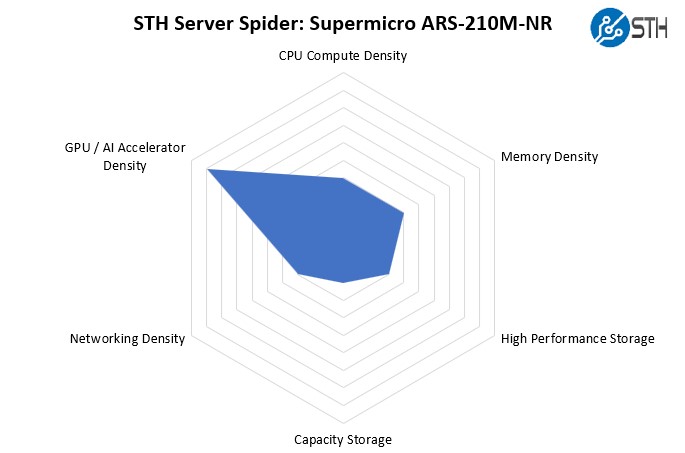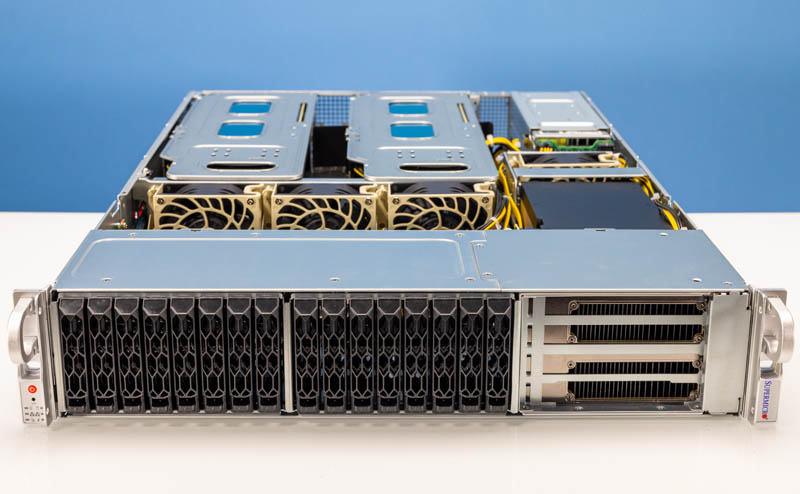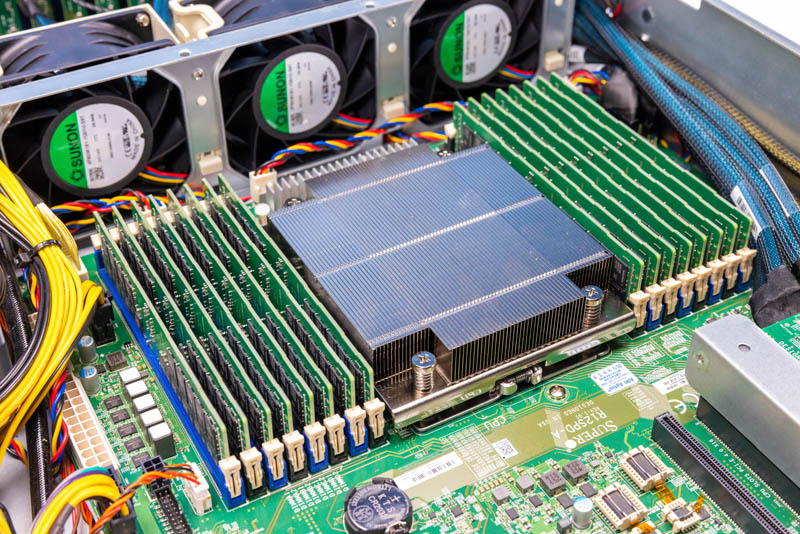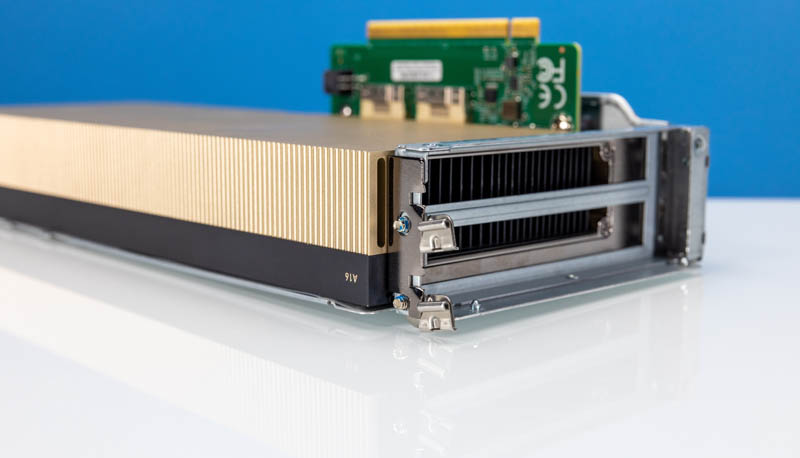Supermicro ARS-210M-NR Power Consumption
The system idled in Ubuntu at around 466W with NVIDIA drivers installed.

With the GPUs running and minimizing CPU utilization, we could add another ~700-750W of the load depending on the fan ramp and exact utilization. We had little challenge getting our test system over 1.4kW. With four NVIDIA A16’s this is always going to use significant power. There is also room in this system to add more cards like an OCP NIC and more storage, so we think there is room to expand here. We are glad that Supermicro is using high-efficiency 2kW power supplies instead of smaller 1.6kW units found on some of its other Ampere systems.
STH Server Spider: Supermicro ARS-210M-NR
In the second half of 2018, we introduced the STH Server Spider as a quick reference to where a server system’s aptitude lies. Our goal is to start giving a quick visual depiction of the types of parameters that a server is targeted at.

With 16 GPUs in a 2U server platform, this is a dense GPU server. The GPUs themselves may not be as powerful as a NVIDIA A100, but the 16x NVIDIA A16 GPUs allows for density required in application scenarios like VDI or cloud gaming. Having more NVENC / NVENC resources also helps here. Of course, one could also add different card configurations, such as using 8x single-width cards instead of the four double-width that we have, but we are showing a very GPU-optimized solution in this review.
Final Words
This is a system that we completely understood the moment we unpacked it. Many years ago, we looked at AoA Analysis Marvell ThunderX2 to 190 Raspberry Pi 4‘s. That was for a very similar market. There is a large contingent of servers now required to run or stream applications, like games, to mobile devices. Some game servers require 1 core per user. Back in the day, solutions like the HP Moonshot were attempts to service that type of market. Unlike those old proprietary platforms, Supermicro now has a solution to enable higher core counts packaged alongside many NVIDIA GPUs and other familiar components like Broadcom SAS controllers and NVIDIA ConnectX networking.

The other aspect of this launch is when it is happening. These are still new systems that are arriving just as the next generation of Intel and AMD systems are out. While AMD has clear performance leadership, and Intel has also forged ahead, there is a high cost to that that the Ampere Altra platform with PCIe Gen4 and DDR4 does not incur.

If you saw the “What’s New?” video I did for Supermicro and Intel, those technologies increase node performance and density, but they also carry a premium price right now.
Still, once Ubuntu was installed, we were able to bring up four NVIDIA A16 cards for a total of 16x Ampere GPUs, each with 16GB of memory on the Arm platform in only a few minutes. That is awesome. NVIDIA is pushing Arm for its AI server platforms, but again, we expect those to be in the premium HPC market instead of this market when they launch. The Supermicro ARS-210M-NR brings nice tool-less designs to the Arm server market without the premium of newer platforms.

From a technology perspective, again, it is great to see Supermicro adopt both OpenBMC as well as the OCP NIC 3.0 form factor. Supermicro’s push into the Ampere Altra (Max) market is much more substantial than many other vendors. This is a machine that companies like Dell, HPE, and Lenovo (outside of their domestic market) do not have a direct answer for. What is more, Supermicro has a line of servers that we showed previously reviewing an edge computing form factor. It is one thing to have a single Arm server. It is another to develop a line of servers to bring that platform to many different environments, including optimized platforms like this for cloud gaming. Overall, this is a great development for the industry.




STH review of NVIDIA A16 when? I loved your old GRID M40’s https://www.servethehome.com/nvidia-grid-m40-4x-maxwell-gpus-16gb-ram-cards/
But… can it run 16 copies of Crysis at 1080?
Title is kind of confusing as there are not 16x GPUs in the system reviewed.
The A16 is a card that contains 4xA2s each with 16GB of dedicated ram. With 4xA16 you would have 16x A2s.
We ran the Bombsquad-stress in this system which up to 128 instances (concurrent users) with 1080P@60fps.
When running the high-quality Genshin Impact this system can support 48 instances and all running 1080P@60fps.
If this has 16x GPUs, then the First Gen EPYC dual-socket configuration had 8-CPUs.
It’s how Nvidia wants to market it but it’s not how we’ve discussed these sorts of products in the past. If one of the GPUs goes bad, how many do you need to replace? 1? Nope, you need to replace 4.
DDR5 almost had this problem but we’ve all settled on calling the current systems by the number of DIMMS instead of sub-channels.